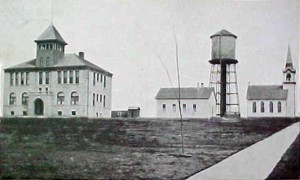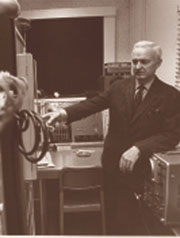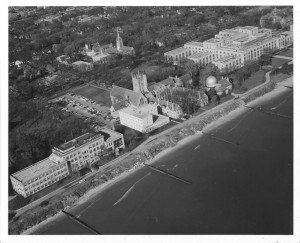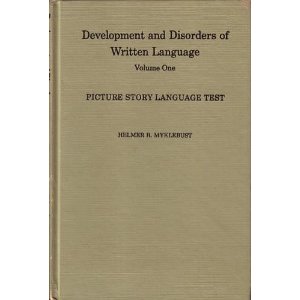Helmer Rudolph Myklebust was a prominent U.S. psychologist whose work relating to the diagnosis and remediation of language problems in children who were deaf or aphasic led to the development of a comprehensive theory of learning disabilities. This theory explained the conditions that caused learning disabilities and guided the design of interventions that would remediate them. Without doubt, Myklebust’s ideas about the nature of psycho-neurologically based learning problems formed the theoretical backbone for the learning disabilities movement from about 1950 through the 1970s.
The Early Years
Helmer Rudolph Myklebust was born on August 2, 1910, in Lester, Iowa, to Samson and Alice (Gjertsen) Myklebust. He was one of eight children, with two brothers and five sisters. When Myklebust was still quite young, the family moved to a farm near the small farming community of Jasper, Minnesota. While living there, he attended a country grade school and graduated from Jasper High School.
Myklebust earned a bachelor of arts degree from Augustana College in 1933, a master’s degree (in psychology of deafness) from Gallaudet College in 1935, a second master’s degree (in clinical psychology) from Temple University in 1942, and a doctoral degree in education (in psychology and guidance) from Rutgers University in 1945. He also completed postdoctoral work in mental retardation, clinical psychology, neurology, and psychoanalysis.
Between 1935 and 1939, Myklebust was a teacher of the deaf at the Tennessee School for the Deaf, where he and his wife were house parents. Later, in 1941, he worked with Edgar A. Doll, director of the Psychological Laboratory at the Vineland Training School, a New Jersey facility dedicated to the education and study of people with profound developmental disabilities. As a result of this association with Doll, Myklebust developed a special interest in the problems of auditory behavior, language, and brain injury.
The Years at Northwestern University
In 1948, Myklebust accepted a position as an associate professor in the Department of Audiology at Northwestern University in Evanston, Illinois. During the 1940s and 1950s, his work focused primarily on the language problems of people who were deaf or aphasic. In 1951, he founded, and became director of, the Children’s Hearing and Aphasia Clinic at the university. At the time, the work of the clinic was focused on the diagnosis and study of various types of auditory problems affecting youngsters. In 1954, however, the name of the clinic was changed to the Institute for Language Disorders because by then its mission had been expanded to include written language (reading, writing) problems as well as problems affecting oral language. In the 1960s, his main interest shifted to children and young adults with psycho-neurologically based learning disabilities. Myklebust remained at Northwestern University until he “retired” in 1968 at the age of 58. At the time, he was a professor of psychology, neurology, and psychiatry.
Work on Deafness and Aphasia
While Myklebust conducted considerable research in the areas of deafness and aphasia, his studies related to the intellectual status of people who are deaf drew the most attention. Among professionals in the field of deafness a long-standing controversy existed as to whether the inability to hear (understand) speech necessarily resulted in generally lower intellectual ability; the prevailing opinion was that it did. The issue, however, was hotly debated during the 19th century and through much of the 20th century.
Drawing on the findings of a series of studies he and his colleagues published between 1948 and 1964, Myklebust concluded that people who are deaf could process intellectual information as well as people who could hear but that problems in comprehending spoken language might interfere with the development of some types of abstract thinking. His conclusions relative to the intelligence of the deaf are described clearly in The Psychology of Deafness (1960, 1964) along with a variety of other topics. The book was a popular textbook for many years.
Myklebust’s middle-of-the-road position regarding the intellectual status of people who are deaf probably did not please the advocates of either of the contrasting points of view on the issue; nonetheless, his work was taken at the time as proof that people who are deaf do possess considerable, if not complete, cognitive ability. Today, the prevailing position among professionals in the deafness field is that deaf persons can understand and employ abstract concepts as well as hearing persons and that any “cognitive deficits” that may be observed are likely the result of lack of experience or of the conditions that cause deafness rather than due to a hearing impairment.
Myklebust, Jon Eisenson, and a few other individuals were pioneers in the area of childhood aphasia, the existence of which was not generally recognized among professionals in speech pathology and psychology. In fact, his research in the 1950s and 1960s did much to establish the condition within the professional community. One can easily trace Myklebust’s evolving thoughts and interest in the area of language disorders, beginning with deafness and acquired aphasia in adults, progressing to childhood aphasia, and ending in learning disability. Throughout his professional career, theoretical positions Mylkebust held were obviously adaptations of the ideas associated with aphasia, especially the childhood variety.
During this period, Myklebust perfected a three-step process for performing a differential diagnosis of auditory disorders in young children. These steps (i.e., history taking, clinical observation, and clinical evaluation) are described in detail in his book Auditory Disorders in Children: A Manual for Differential Diagnosis (1954, 1960, 1964). These steps were key components of Myklebust’s approach to diagnosing problems in children who were deaf or aphasic and later, in altered form, to diagnosing children with learning disabilities.
Work on Learning Disabilities
While studying deafness, aphasia, and auditory disorders, Myklebust encountered individuals who could hear but had difficulty understanding and using speech; who exhibited aphasic-like behavior but had equivocal or no history of brain trauma; who had intellectual abilities in the normal range; and who experienced significant problems in reading, writing, arithmetic, or nonverbal learning, as well as in auditory language. During the 1960s, Mylkebust’s main interest shifted to study these youngsters; Myklebust called their learning and behavior problems psychoneurological learning disabilities, a term that he coined.
Myklebust believed that individuals with this type of learning disability could be distinguished from other groups of people whose learning and behavior problems resulted from intellectual impairment, insufficient motivation, or unproductive educational experience. He also designed instructional interventions to remediate specific problems in oral and written language and arithmetic. These interventions were composed of on-task, clinically oriented instructional activities designed to meet the needs of individual children. For example, the activities for teaching reading and writing are almost all orthographic in nature, encompassing letters, spelling, punctuation, composition, and cursive writing. In addition to interventions, Myklebust developed the Picture Story Language Test (1965), for diagnosing children with disorders of written language, and the Pupil Rating Scale (1971), for screening children with learning disabilities. In 1967, Myklebust and Doris Johnson published Learning Disabilities: Educational Principles and Practices, one of the first comprehensive works dealing with learning disabilities. Its clinically oriented contents were influential in giving theoretical and practical direction to the LD field during its formative years and beyond.
In 1969, in an attempt to resolve definitional problems related to learning disabilities, the federal government funded a meeting of 15 respected authorities hosted by Northwestern University and chaired by Myklebust. The meeting’s purpose was to prepare a definition that would receive broad-based acceptance in the field. Many of Myklebust’s ideas were incorporated into the resulting definition, which may have served as the basis for the 1976 U.S. Office of Education’s definition (i.e., the “federal definition”) that is still in use as of 2012.
The Later Years
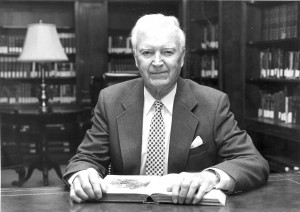 After leaving Northwestern University, Myklebust accepted teaching positions at Northern Illinois University in 1969 and then at the University of Illinois–Chicago in 1972. During the early 1970s, Myklebust edited five volumes of a book series titled Progress in Learning Disabilities. The chapters of these books were authored by well-known professionals at the time who wrote about current research, issues, and viewpoints pertaining to learning disabilities. Eventually, Myklebust left Illinois and moved permanently to Sioux Falls, South Dakota, where he soon became actively involved in the activities and programs of Augustana College, the school he had attended in the early 1930s. He was particularly interested in the college’s Mikkleson Library, and in 2005 he funded the Myklebust Room to house its rare book collection. Between 1988 and 1998, Myklebust and the estate of his first wife, Helen, contributed generously to Augustana College.
After leaving Northwestern University, Myklebust accepted teaching positions at Northern Illinois University in 1969 and then at the University of Illinois–Chicago in 1972. During the early 1970s, Myklebust edited five volumes of a book series titled Progress in Learning Disabilities. The chapters of these books were authored by well-known professionals at the time who wrote about current research, issues, and viewpoints pertaining to learning disabilities. Eventually, Myklebust left Illinois and moved permanently to Sioux Falls, South Dakota, where he soon became actively involved in the activities and programs of Augustana College, the school he had attended in the early 1930s. He was particularly interested in the college’s Mikkleson Library, and in 2005 he funded the Myklebust Room to house its rare book collection. Between 1988 and 1998, Myklebust and the estate of his first wife, Helen, contributed generously to Augustana College.
In his mid-80s, Myklebust published two books that had nothing to do with deafness, aphasia, or learning disabilities: Understanding Ourselves as Adults: The Meaning of Emotional Maturity (1994, republished 1998) provided insights as to why some people lead unrewarding lives, and Conscience: Knowing Right from Wrong (1997) dealt with the reasons why moral values and conscience development are essential to a society. One should not find Myklebust’s choice of the subject matter of these books surprising. Myklebust was a life-long Lutheran whose generous support of Augustana College (a Lutheran-affiliated school) suggests a spiritual nature; in addition, he had formal training in clinical psychology and guidance, as well as in psychoanalysis, disciplines that focus on the affective, introspective aspects of thinking and living. Perhaps these were the books that Myklebust had always wanted to write but had never had the time for before.
Personal Life
Myklebust was married twice but had no biological children. In 1939, he married M. Helen Qualset, and their union lasted until she died in 1987. In 1992 he married Mary Barkley, who had five children from a previous marriage. Myklebust enjoyed reading, writing, research, travel, and training Arabian horses. He was awarded two honorary degrees: a doctor of letters from Gallaudet University in 1958 and a doctor of laws from Augustana College in 1985. He was a Fellow of the American Psychological Association and the American Association for the Advancement of Science. Helmer Rudolph Myklebust died February 26, 2008, at the age of 97; services were held at Christ the Victor Chapel of First Lutheran Church in Sioux Falls, South Dakota.
Sources
Fletcher-Janzen, E., & Martin, T. J. (2007) Myklebust, Helmer R. In C. R. Reynolds & E. Fletcher-Janzen (Eds.), Encyclopedia of special education (3rd. ed., pp. 1409–1410). Hoboken, NJ: Wiley.
Myers, P., & Hammill, D. (1990). Myklebust and Johnson: A psychoneural approach. In P. Myers & D. Hammill (Eds.), Learning disabilities (pp. 132–148). Austin, TX: PRO-ED.
Pinter, R., Eisenson, J., & Stanton, M. (1941). Psychology of the physically handicapped. New York, NY: F. S. Crofts.
Tarver, S. G., & Hallahan, D. P. (1976). Children with learning disabilities: An overview. In J. M. Kauffman & D. P. Hallahan (Eds.), Teaching children with learning disabilities: Personal perspectives (pp. 2–57). Columbus, OH: Merrill.
Selected Readings for Myklebust (in order of publication date)
Myklebust, H., & Brutten, M. (1951). A survey of research needs in the education of the deaf. American Annals of the Deaf, 96, 512–523.
Myklebust, H. (1952). Aphasia in childhood. Journal of Exceptional Children, 19, 9–14.
Myklebust, H., & Brutten, M. (1953). A study of the visual perception of deaf children. Acta Otolaryngologica (Suppl. 105).
Myklebust, H. (1954, 1960). Auditory disorders in children: A manual for differential diagnosis. New York, NY: Grune & Stratton.
Myklebust, H., & Boshes, B. (1960). Psycholoneurological learning disorders in children. Rehabilitation Literature, 77, 247–278.
Myklebust, H. (1960). The psychology of deafness: Sensory deprivation, learning and adjustment. New York, NY: Grune & Stratton.
Myklebust, H. (1964). The psychology of deafness: Sensory deprivation, learning and adjustment (2nd ed.). New York, NY: Grune & Stratton.
Myklebust, H. (1965). (Ed.). Picture story language test: Vol. 1. Developmental and disorders of written language. New York, NY: Grune & Stratton.
Johnson, D. J., & Myklebust, H. (1967). Learning disabilities: Educational principles and remedial approaches. New York, NY: Grune & Stratton.
Myklebust, H. (1968). Progress in learning disabilities (Vol. I). New York, NY: Grune & Stratton.
Myklebust, H. (1971). Pupil rating scale: Screening for learning disabilities. New York, NY: Grune & Stratton.
Myklebust, H. (1971). Pupil rating scale: Screening for learning disabilities (Rev. ed.). New York, NY: Grune & Stratton.
Myklebust, H. (1971). Progress in learning disabilities (Vol. II). New York, NY: Grune & Stratton.
Myklebust, H. (1973). (Ed.). Development and disorders of written language: Vol 2. Studies of normal and exceptional children. New York, NY: Grune & Stratton.
Myklebust, H. (1975). Progress in learning disabilities (Vol. 3). New York, NY: Grune & Stratton.
Myklebust, H. (1978). Progress in learning disabilities (Vol. 4). New York, NY: Grune & Stratton.
Myklebust, H. (1983). Progress in learning disabilities (Vol. 5). New York, NY: Grune & Stratton.
Myklebust, H. (1997). Conscience: Knowing right from wrong. Sioux Falls, SD: Center for Western Studies.
Myklebust, H. (2000). Understanding ourselves as adults: The meaning of emotional maturity. Sioux Falls, SD: Augustana College Press.
Please cite this information as follows: Hammill, D. D. (2012). Helmer Rudolph Myklebust (1910–2008). Hammill Institute Preservation Project. Retrieved from http://hammill-institute.org/hipp.

